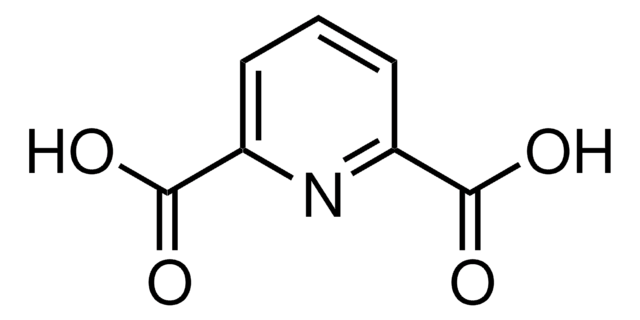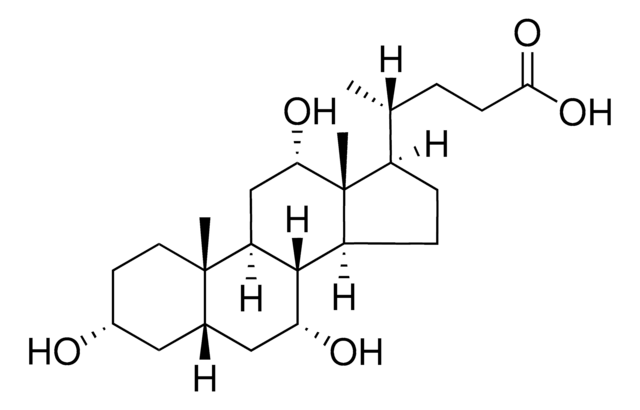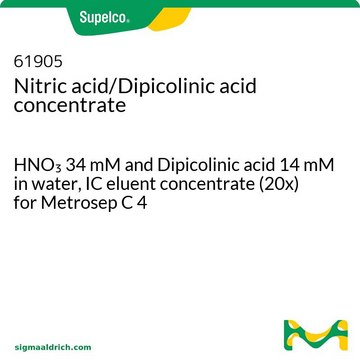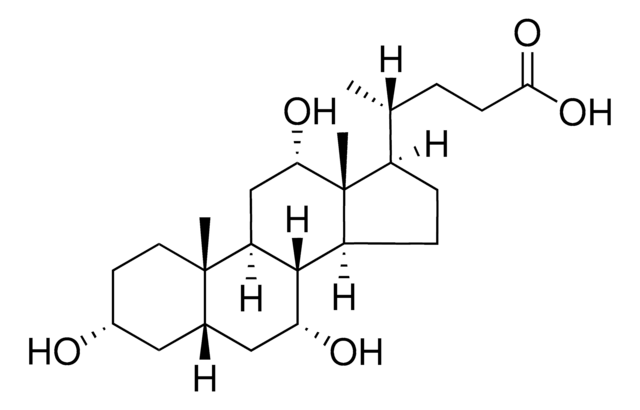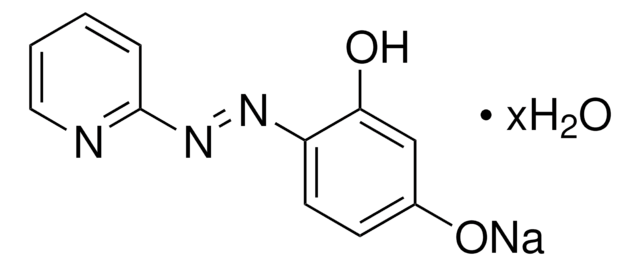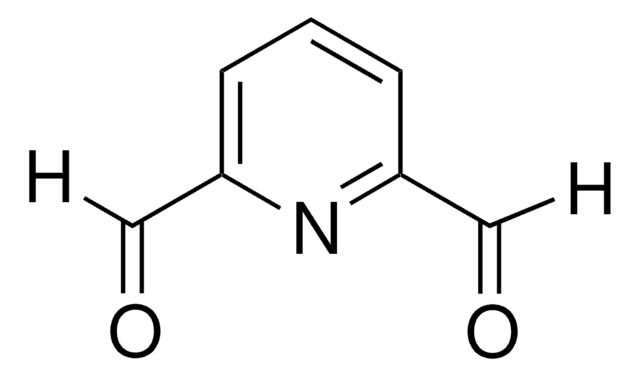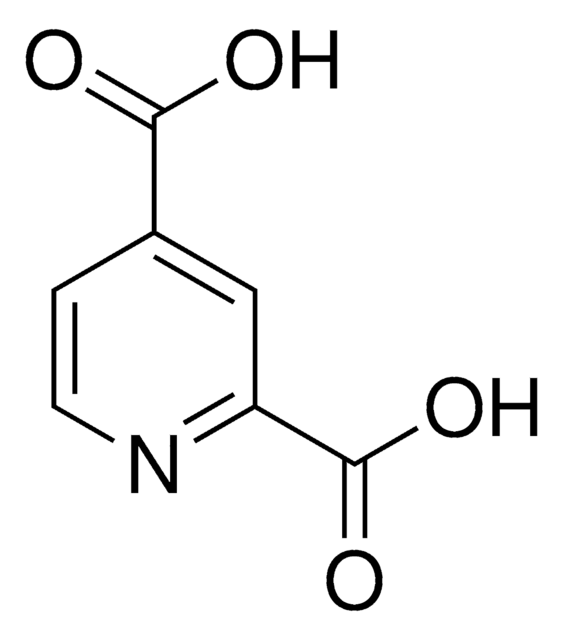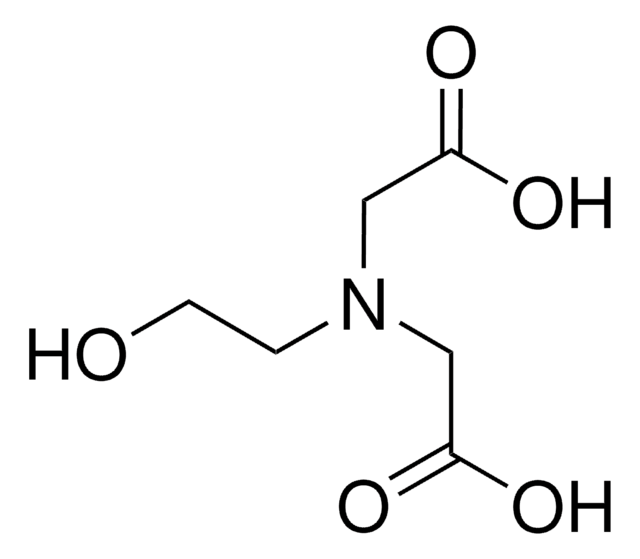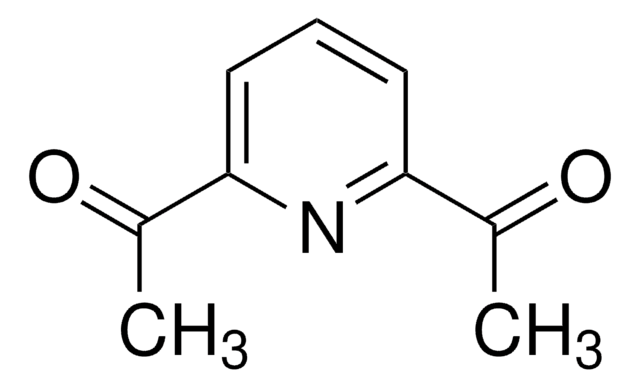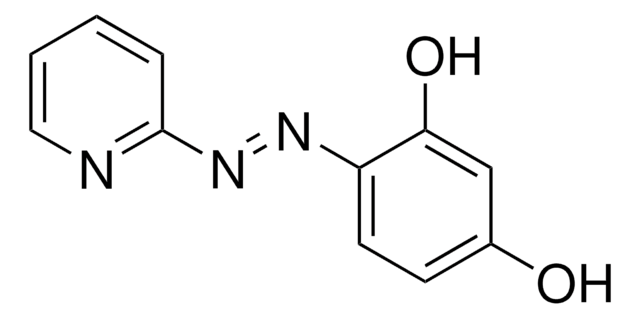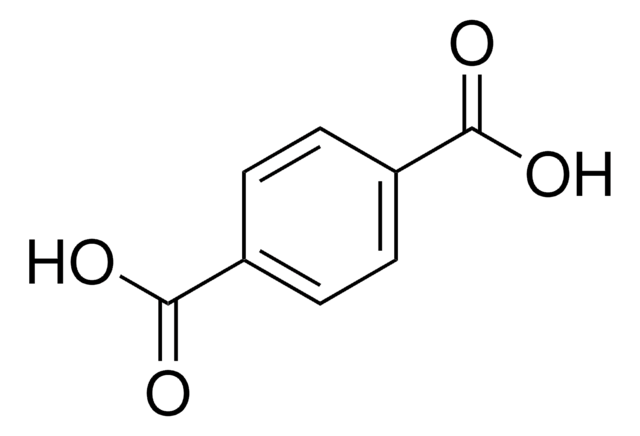8.00614
Acide pyridine-2,6-dicarboxylique
for synthesis
Synonyme(s) :
Acide pyridine-2,6-dicarboxylique
About This Item
Produits recommandés
Pression de vapeur
<0.01 hPa ( 20 °C)
Niveau de qualité
Essai
≥98.0% (acidimetric)
Forme
powder
Température d'inflammation spontanée
620 °C
Puissance
10500 mg/kg LD50, oral (Rat)
pH
2.0 (20 °C, 5 g/L in H2O)
Pf
248-255 °C
Solubilité
5 g/L
Masse volumique apparente
700 kg/m3
Température de stockage
2-30°C
InChI
1S/C7H5NO4/c9-6(10)4-2-1-3-5(8-4)7(11)12/h1-3H,(H,9,10)(H,11,12)
Clé InChI
WJJMNDUMQPNECX-UHFFFAOYSA-N
Catégories apparentées
Application
- Adsorption of Cu(II) ions from aqueous solution using pyridine-2,6-dicarboxylic acid crosslinked chitosan as a green biopolymer adsorbent.: This research explores the efficiency of a green biopolymer, specifically chitosan crosslinked with pyridine-2,6-dicarboxylic acid, for the adsorption of copper ions from aqueous solutions, highlighting its potential for environmental cleanup and water treatment (Bisiriyu et al., 2020).
- Crystal structure of nonadentate tricompartmental ligand derived from pyridine-2,6-dicarboxylic acid: Spectroscopic, electrochemical and thermal investigations of its transition metal(II) complexes.: This article details the structural and functional characteristics of a complex ligand derived from pyridine-2,6-dicarboxylic acid, which could inform further research in coordination chemistry and material science (Vadavi et al., 2011).
- Pyridine-substituted oligopeptides as scaffolds for the assembly of multimetallic complexes: variation of chain length.: This research explores the use of pyridine-2,6-dicarboxylic acid in the construction of oligopeptide scaffolds for multimetallic complexes, relevant to the fields of molecular engineering and nanotechnology (Ohr et al., 2005).
- Comprehensive study of the luminescent properties and lifetimes of Eu(3+) and Tb(3+) chelated with various ligands in aqueous solutions: influence of the synergic agent, the surfactant and the energy level of the ligand triplet.: This study provides a thorough analysis of the luminescent behavior of lanthanide complexes with pyridine-2,6-dicarboxylic acid derivatives, significant for developing advanced photonic and electronic materials (Arnaud et al., 2003).
Remarque sur l'analyse
Identité (IR) : conforme
Mention d'avertissement
Danger
Mentions de danger
Classification des risques
Eye Dam. 1 - Skin Corr. 1B - STOT SE 3
Organes cibles
Respiratory system
Code de la classe de stockage
8A - Combustible, corrosive hazardous materials
Classe de danger pour l'eau (WGK)
WGK 3
Point d'éclair (°F)
370.4 °F - closed cup
Point d'éclair (°C)
188 °C - closed cup
Certificats d'analyse (COA)
Recherchez un Certificats d'analyse (COA) en saisissant le numéro de lot du produit. Les numéros de lot figurent sur l'étiquette du produit après les mots "Lot" ou "Batch".
Déjà en possession de ce produit ?
Retrouvez la documentation relative aux produits que vous avez récemment achetés dans la Bibliothèque de documents.
Les clients ont également consulté
Notre équipe de scientifiques dispose d'une expérience dans tous les secteurs de la recherche, notamment en sciences de la vie, science des matériaux, synthèse chimique, chromatographie, analyse et dans de nombreux autres domaines..
Contacter notre Service technique